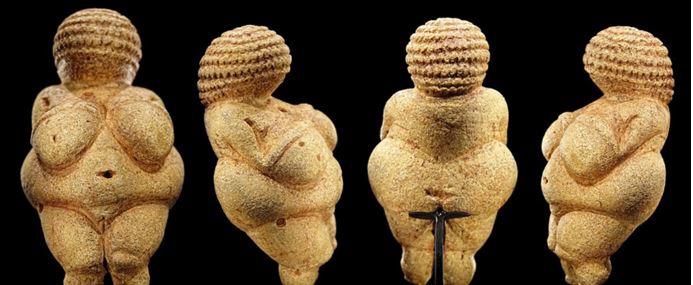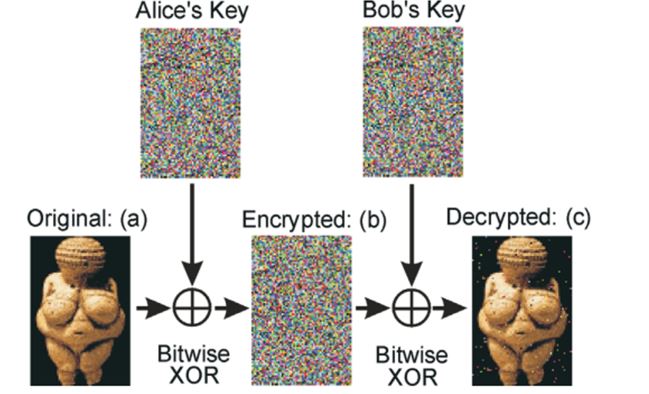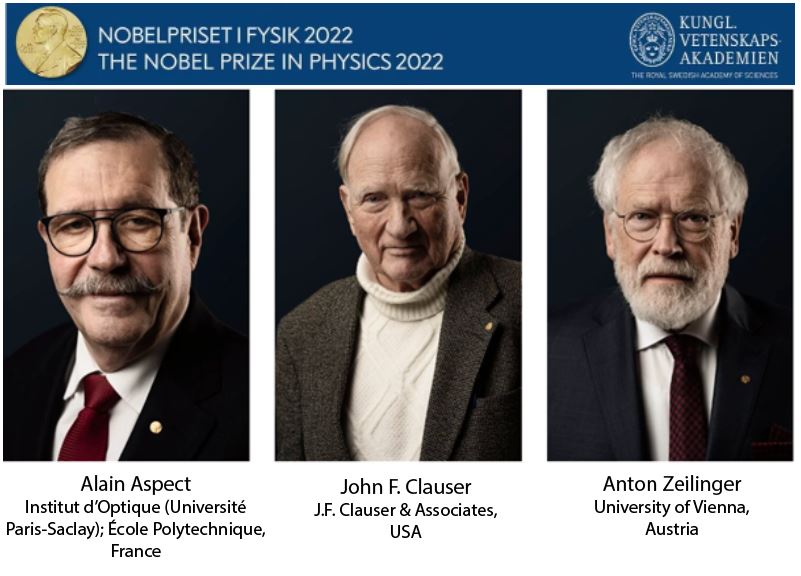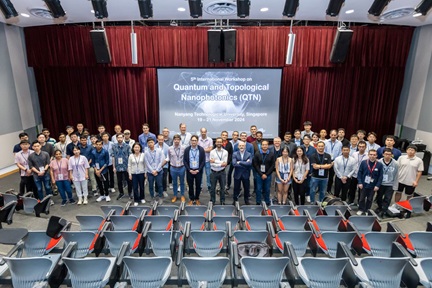2022 Nobel Prize in Physics: Experimental Efforts Towards Quantum Entanglement
Assoc Professor Kwek Leong Chuan | Co-Director, Quantum Science and Engineering Centre, NTU
Image source: https://www.nobelprize.org/prizes/physics/2022/summary/
1 Preamble
I have only met John Clauser once, and that incident was nearly two decades ago. And I don’t think he remembered me at all, as I was listed as a participant from Nanyang Technological University, China (the country was wrongly listed). It was a conference organised by Anton Zeilinger, in honour of John Bell: “Quantum (Un)Speakables: Conference in Commemoration of John S. Bell”, where many people associated with Bell inequality like Roman Jackiw, Roger Penrose, Ed Fry, Reinhardt Bertlmann, Bernard d’Espagnat, Abner Shimony, Michael Horne, Artur Ekert, Marek Zukowski, Gerardus ’t Hooft [BZ02]. I think John even joined us for a dinner organised by Artur Ekert and Lev Vaidman in Vienna. My lasting impression of John Clauser was that he was always carrying a old typewriter everywhere.
Of course, Alain Aspect was also at the conference and so was Anton (organiser). At that conference, I do not remember interacting a lot with Alain, though we got to know each other better later on when he visited Singapore several times. Alain was fond of good food and I brought him to a Mod-Sin restaurant, started by Willin Low, one of my former students. Mod-Sin refers to “Modern Singaporean” cuisine, coined by Willin. Of course, Alain thoroughly enjoyed the dinner.
Anton was the organiser of the conference and naturally he was everywhere. He was actually our tour guide for a trip to look at the statue of the Venus of Willendorf on the banks of the Danube River. In one of his papers [JSW+00], Anton had previously used a large key generated through the Bennett-Brassard 84 protocol [BB84] to transmit an image of the statue.

Images of the Venus of Willendorf figurine. It is estimated to have been made around 25,000–30,000 years ago. This image is taken from https://en.wikipedia.org/wiki/Venus of Willendorf.
2 The Prize
On the official Nobel Prize website, the Nobel Prize in Physics 2022 was awarded to Alain Aspect, John Clauser and Anton Zeilinger “for experiments with entangled photons, establishing the violation of Bell inequalities and pioneering quantum information science”. Entangled photons were studied a long time ago, as early as 1949, when Wu and Shaknov [WS50], and later by Kocher and Commins [KC67], conducted experiments on correlation of photons. Wu and Shaknov bombarded a sheet of copper with deuterons. This generates an unstable isotope, Cu 64, as a source of positrons -- the antimatter. When a positron and an electron collide, they annihilate each other, releasing two photons that fly apart in opposite directions (paired production). The resulting photons would be polarized in orthogonal polarizations, in congruence with Wheeler’s theory.
3 Quantum entanglement
In 1935, Albert Einstein, Boris Podolsky and Nathan Rosen published a paper titled “Can Quantum- Mechanical Description of Physical Reality be Considered Complete?” [EPR35]. The paper was written mainly by Boris Podolsky and Einstein was not completely happy with the published version. In the same journal, Bohr rebuked with another paper with the same title [Boh35]. Stripped of its pedantry, the paper essentially describes the possibility for wave function of two particles to be correlated in such a way that when the momentum of one particle is measured, the momentum of the other particle can be predicted precisely. After all, if the two particles fly apart in opposite directions, their momentum is conserved. Also, when the position of one particle is measured, the position of the other particle is also known. So one can measure the position of one particle, say particle A, and the momentum of the other particle, say particle B. Since the momentum of particle B is known, so is the momentum of particle A. In this way, the position and momentum of particle A can be determined precisely in contradiction to Heisenberg uncertainty principle. This seemingly profound paradox is now popularly called the Einstein-Podolsky-Rosen or EPR paradox.
Einstein believed that Nature is either local or realistic or both. By locality, they referred to the fact that results obtained at one location are independent of any actions performed at another space-like separated site. By realism, they meant that measurement results are determined by properties the particles carry prior to, and independent of, the measurement. Yet, in quantum mechanics, whenever we make a measurement, the wave function collapses and, the single-shot measurement result is random. It is in this context that the authors argued that quantum mechanics as a theory is therefore incomplete.

Experimental realisation using polarisation entangled pairs of photons, a key was created, and it was used to actually transmit the image of the famous Venus von Willendorf sculpture.
4 Bell inequalities
In the early sixties, John Bell formulated an inequality that provides constraint on the statistical correlations in experiments involving two subsystems, a so-called bipartite system1. Essentially Bell’s inequality allows the experimentalist to decides if a state shared between two parties is separable or entangled through the correlations.
5 Experiments
Bell’s inequality is a testable proposition. We have mentioned that Wu and Shaknov as well as Kocher and Commins were among the first to test for correlation of particles and photons [KC67]. But John Clauser, as a graduate student in Columbia, stumbled on Bell’s paper in the library in 1967 and together with Mike Horne, Abner Shimony and Richard Holt, they proposed a modified Bell inequality, now called the Clauser-Horne-Shimony-Holt (CHSH) inequality [CHSH69] that could put Bell inequality to an experimental test. And John, together with his graduate student, Stuart Freedman went on to prove experimentally that two spatially separated particles (about 10 feet apart) can violate the CHSH inequality [FC72]. Their experiments were in some sense similar to the earlier ones by Kocher and Commins except that in experiments performed by Kocher and Commins, the angles were fixed at 0◦ and 90◦. These experiments led to many other experimental confirmations [Cla74, Fry73, HP74]. Many years later, John, on why he did the experiments, said: “I found Einstein’s ideas to be very clear. I found Bohr’s rather muddy and difficult to understand.” 2 So, that was a reason for doing an experiment.
We need to remember that in the sixties and early seventies, most physicists shunned the subject of local realistic description of Nature. After all, Richard Feynman even told Clauser that testing Bell inequalities is equivalent to a disbelief in quantum theory, which he and many other researchers believe to be right. It was also in this atmosphere that John Bell seminal work in 1964 on Bell’s theorem was actually relegated to obscure journals, like Physics [Bel64], and an underground physics newspaper, Epistemological Letters [Bel85]. Yet, when Clauser wrote to Bell, John Bell actually encouraged Clauser to pursue the experiment on his version of the Bell inequality.
But the first generation of experiments performed by John Clauser and other researchers were not sufficiently convincing for the philosophically minded. Aside from low signal to noise ratios, these experiments suffered from many extra assumptions needed for the test to hold. These assumptions form the main force behind the need to pluck the loopholes in Bell tests. Two most well-known loopholes are the “locality” loophole and the “efficiency” loophole. The early experiments were of course not immune to the loophole of a hypothetically unknown interaction between the two polarisers, which were far away from each other. This is called the locality loophole and Alain Aspect knew about it.
Alain Aspect had the privilege of getting a permanent position as a maître assistant at École Normale Supérieure at Cachan. When he approached his PhD supervisor Christian Imbert for a topic, Christian passed him a box of papers on the foundation of quantum mechanics. Among the various papers in the box, there were three papers that caught Alain’s attention: John Bell paper on the inequality [Bel64], the original EPR paper [EPR35] and Bell’s review paper in the review of Modern Physics [Bel66]. He got absorbed into those papers, and he approached Bell that he would like to do experiments that once and for all vindicate quantum theory through his (John Bell’s) inequality. John as before encouraged him to do so, but then he also asked Alain if he had a permanent position[PD23]. In his interview with Bill Phillips and Jean Dalibard, Alain also said: “he (John Bell) explained that I would be considered by a majority of physicists as a crackpot. I didn’t know the word, so I asked him to explain the word ‘crackpot.’ So he told me that most of the physicists would consider in the best case that it was a waste of time, and more often that I was just crazy to do so[sic].” [PD23]
Alain started his first experiment in collaboration with Aspect’s undergraduate student, Philippe Grangier, and a research engineer, G´erard Roger[AGR81]. In the second experiment, still with Grangier and Roger as collaborators, Aspect used two-channel polarisers to have a straightforward transposition of the EPR Gedankenexperiment [AGR82]. In all these experiments, they were able to show how one could overcome some of the loopholes in the theory. In fact, Aspect’s experiments were performed using fast-switching acoustic-optic modulators, and the Bell inequality was violated to 5 standard deviations [ADR82]. Also, in the Aspect’s experiment, the source was separated from the polarizer by 6.5 m.
But this distance is going to be increased. In the eighties and nineties, there were a furry of beautiful experiments [OM88, OPKP92, KESC94, KSC93] involving nonlinear splitting of ultraviolet photons to produce pairs of correlated EPR photons. These EPR pairs allow discrete variables measurements such as polarisation or spin components, as considered by Bell, or continuous variables measurements of the type originally considered by Einstein, Podolsky and Rosen [Asp99].
In 1998, Anton Zeilinger and his team improved on Aspect’s 1982 experiment with time-varying analyzers [WJS+98]. Their experiment tightened the locality loophole. They switched to analysers that could satisfy the need for random settings. And, their detectors were separated by 400 m, and yet they violate Bell’s inequality impressively by more than 30 standard deviations. By 2015, there were several experiments that attempted to close the locality and the detection (fair-sampling) loopholes. These experiments were performed in at the University of Vienna led by Anton Zeilinger [GVW+15], at NIST in Boulder, Colorado by Lynden Shalm [SMSC+15], and at Delft University of Technology by Ronald Hanson[HBD+15]. In particular, the last experiment extends the distance betwen two electron spins to 1.3 km. Zeilinger’s and Shalm’s teams used the state-of-the-art detectors with efficiency above 90%. Entangled photon pairs were produced through parametric down conversion and they installed new random number generators capable of changing the alignments of the polarisers more efficiently. Hanson’s team used electron spins in solid state system and developed an advanced strategy to prevent the fair-sampling loophole. The spatial separation of the detectors for the violation of Bell inequalities has also been extended to longer and longer distances [PYB+05, TBZG98, YCL+17]. By 2015, this distance has already extended to more than 100 km through satellite connection. There were even proposals and tests of photons violating Bell inequalities from distant quasar sources [GFK14, RHH+18].
6 Quantum Entanglement as a Resource
But Anton Zeilinger is also a master of quantum entanglement. By the nineties, several schemes using quantum entanglement as a resource were proposed: the teleportation of an unknown quantum state between two distant observers [BB84], the application of Bell inequality to quantum key distribution [Eke91], a quantum communication scheme, known as quantum dense coding, enabling the transmission of more than one bit of classical information with the transmission of a single particle [BW92] and so forth. In each case, Anton led beautiful experiments that convincingly demonstrated the viability [BPM+97, JSW+00, PFU+04, MWKZ96]. Perhaps, what is even more important is the fact that one has gone through ostensibly “charlatan” physics to real serious theoretical work to experimental verification and future applications.
Watch the video on the 2022 Nobel Prize In Physics
References
[ADR82] Alain Aspect, Jean Dalibard, and G´erard Roger. Experimental test of bell’s inequalities using time-varying analyzers. Physical review letters, 49(25):1804, 1982.
[AGR81] Alain Aspect, Philippe Grangier, and G´erard Roger. Experimental tests of realistic local theories via bell’s theorem. Physical review letters, 47(7):460, 1981.
[AGR82] Alain Aspect, Philippe Grangier, and G´erard Roger. Experimental realization of einstein- podolsky-rosen-bohm gedankenexperiment: A new violation of bell’s inequalities. Physical review letters, 49(2):91, 1982.
[Asp99] Alain Aspect. Bell’s inequality test: more ideal than ever. Nature, 398(6724):189–190, 1999.
[BB84] CH Bennett and G Brassard. Proceedings of the international conference on computer systems and signal processing, bangalore, 1984. 1984.
[Bel64] John S Bell. On the Einstein Podolsky Rosen paradox. Physics Physique Fizika, 1(3):195, 1964.
[Bel66] John S Bell. On the problem of hidden variables in quantum mechanics. Reviews of Modern physics, 38(3):447, 1966.
[Bel85] John Stewart Bell. The theory of local beables. Dialectica, 39:86–96, 1985. also in Epistemological Lett., 9, (1976).
[Boh35] Niels Bohr. Can quantum-mechanical description of physical reality be considered com- plete? Physical review, 48(8):696, 1935.
[BPM+97] Dik Bouwmeester, Jian-Wei Pan, Klaus Mattle, Manfred Eibl, Harald Weinfurter, and Anton Zeilinger. Experimental quantum teleportation. Nature, 390(6660):575–579, 1997.
[BW92] Charles H Bennett and Stephen J Wiesner. Communication via one-and two-particle operators on einstein-podolsky-rosen states. Physical review letters, 69(20):2881, 1992.
[BZ02] Reinhold A Bertlmann and Anton Zeilinger. Quantum [un] speakables: from Bell to quantum information. Springer, 2002.
[CHSH69] John F Clauser, Michael A Horne, Abner Shimony, and Richard A Holt. Proposed exper- iment to test local hidden-variable theories. Physical review letters, 23(15):880, 1969.
[Cla74] John F Clauser. Experimental distinction between the quantum and classical field- theoretic predictions for the photoelectric effect. Physical Review D, 9(4):853, 1974.
[Eke91] Artur K Ekert. Quantum cryptography based on bell’s theorem. Physical review letters, 67(6):661, 1991.
[EPR35] Albert Einstein, Boris Podolsky, and Nathan Rosen. Can quantum-mechanical description of physical reality be considered complete? Physical review, 47(10):777, 1935.
[FC72] Stuart J Freedman and John F Clauser. Experimental test of local hidden-variable theo- ries. Physical Review Letters, 28(14):938, 1972.
[Fry73] Edward S Fry. Two-photon correlations in atomic transitions. Physical Review A, 8(3):1219, 1973.
[GFK14] Jason Gallicchio, Andrew S Friedman, and David I Kaiser. Testing bell’s inequality with cosmic photons: closing the setting-independence loophole. Physical review letters, 112(11):110405, 2014.
[GVW+15] Marissa Giustina, Marijn AM Versteegh, S¨oren Wengerowsky, Johannes Handsteiner, Armin Hochrainer, Kevin Phelan, Fabian Steinlechner, Johannes Kofler, Jan-˚Ake Lars- son, Carlos Abell´an, et al. Significant-loophole-free test of bell’s theorem with entangled photons. Physical review letters, 115(25):250401, 2015.
[HBD+15] Bas Hensen, Hannes Bernien, Ana¨ıs E Dr´eau, Andreas Reiserer, Norbert Kalb, Machiel S Blok, Just Ruitenberg, Raymond FL Vermeulen, Raymond N Schouten, Carlos Abell´an, et al. Loophole-free bell inequality violation using electron spins separated by 1.3 kilome- tres. Nature, 526(7575):682–686, 2015.
[HP74] RA Holt and FM Pipkin. Precision measurement of the lifetime of the 7 s 1 3 state of atomic mercury. Physical Review A, 9(2):581, 1974.
[JSW+00] Thomas Jennewein, Christoph Simon, Gregor Weihs, Harald Weinfurter, and Anton Zeilinger. Quantum cryptography with entangled photons. Physical review letters, 84(20):4729, 2000.
[KC67] Carl A Kocher and Eugene D Commins. Polarization correlation of photons emitted in an atomic cascade. Physical Review Letters, 18(15):575, 1967.
[KESC94] Paul G Kwiat, Philippe H Eberhard, Aephraim M Steinberg, and Raymond Y Chiao. Proposal for a loophole-free bell inequality experiment. Physical Review A, 49(5):3209, 1994.
[KSC93] Paul G Kwiat, Aephraim M Steinberg, and Raymond Y Chiao. High-visibility interference in a bell-inequality experiment for energy and time. Physical Review A, 47(4):R2472, 1993.
[MWKZ96] Klaus Mattle, Harald Weinfurter, Paul G Kwiat, and Anton Zeilinger. Dense coding in experimental quantum communication. Physical review letters, 76(25):4656, 1996.
[OM88] ZY Ou and L Mandel. Violation of bell’s inequality and classical probability in a two- photon correlation experiment. Physical review letters, 61(1):50, 1988.
[OPKP92] ZY Ou, Silvana F Pereira, HJ Kimble, and KC Peng. Realization of the einstein-podolsky- rosen paradox for continuous variables. Physical Review Letters, 68(25):3663, 1992.
[PD23] William D Phillips and Jean Dalibard. Experimental tests of bell’s inequalities: a first- hand account by alain aspect. The European Physical Journal D, 77(1):8, 2023.
[PFU+04] Andreas Poppe, Alessandro Fedrizzi, R Ursin, HR B¨ohm, T Loru¨nser, O Maurhardt, Momtchil Peev, Martin Suda, Christian Kurtsiefer, Harald Weinfurter, et al. Prac- tical quantum key distribution with polarization entangled photons. Optics Express, 12(16):3865–3871, 2004.
[PYB+05] Cheng-Zhi Peng, Tao Yang, Xiao-Hui Bao, Jun Zhang, Xian-Min Jin, Fa-Yong Feng, Bin Yang, Jian Yang, Juan Yin, Qiang Zhang, et al. Experimental free-space distribution of entangled photon pairs over 13 km: towards satellite-based global quantum communica- tion. Physical review letters, 94(15):150501, 2005.
[RHH+18] Dominik Rauch, Johannes Handsteiner, Armin Hochrainer, Jason Gallicchio, Andrew S Friedman, Calvin Leung, Bo Liu, Lukas Bulla, Sebastian Ecker, Fabian Steinlechner, et al. Cosmic bell test using random measurement settings from high-redshift quasars. Physical review letters, 121(8):080403, 2018.
[SMSC+15] Lynden K Shalm, Evan Meyer-Scott, Bradley G Christensen, Peter Bierhorst, Michael A Wayne, Martin J Stevens, Thomas Gerrits, Scott Glancy, Deny R Hamel, Michael S Allman, et al. Strong loophole-free test of local realism. Physical review letters, 115(25):250402, 2015.
[TBZG98] Wolfgang Tittel, Ju¨rgen Brendel, Hugo Zbinden, and Nicolas Gisin. Violation of bell inequalities by photons more than 10 km apart. Physical review letters, 81(17):3563, 1998.
[WJS+98] Gregor Weihs, Thomas Jennewein, Christoph Simon, Harald Weinfurter, and Anton Zeilinger. Violation of bell’s inequality under strict einstein locality conditions. Phys- ical Review Letters, 81(23):5039, 1998.
[WS50] Chien-Shiung Wu and Irving Shaknov. The angular correlation of scattered annihilation radiation. Physical Review, 77(1):136, 1950.
[YCL+17] Juan Yin, Yuan Cao, Yu-Huai Li, Sheng-Kai Liao, Liang Zhang, Ji-Gang Ren, Wen-Qi Cai, Wei-Yue Liu, Bo Li, Hui Dai, et al. Satellite-based entanglement distribution over 1200 kilometers. Science, 356(6343):1140–1144, 2017














/enri-thumbnails/careeropportunities1f0caf1c-a12d-479c-be7c-3c04e085c617.tmb-mega-menu.jpg?Culture=en&sfvrsn=d7261e3b_1)

/cradle-thumbnails/research-capabilities1516d0ba63aa44f0b4ee77a8c05263b2.tmb-mega-menu.jpg?Culture=en&sfvrsn=1bc94f8_1)







